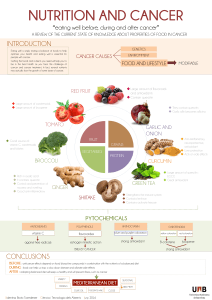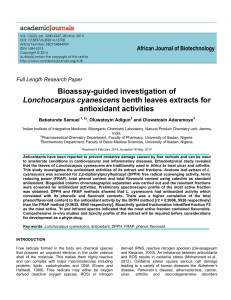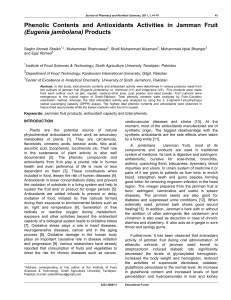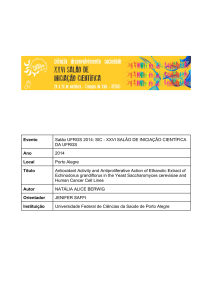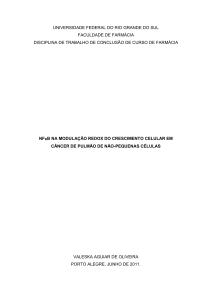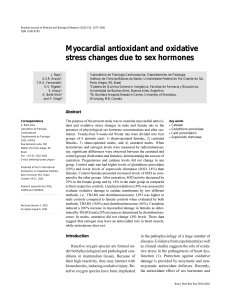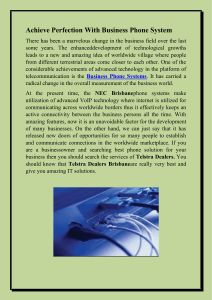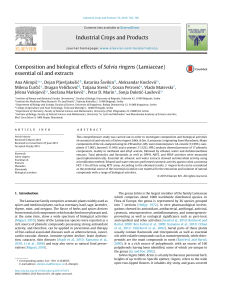İlhami Gülçin; Zübeyr Huyut; Mahfuz Elmastaş; Hassan Y. Aboul-Enein (2010). Radical scavenging and antioxidant activity of tannic acid.
publicité
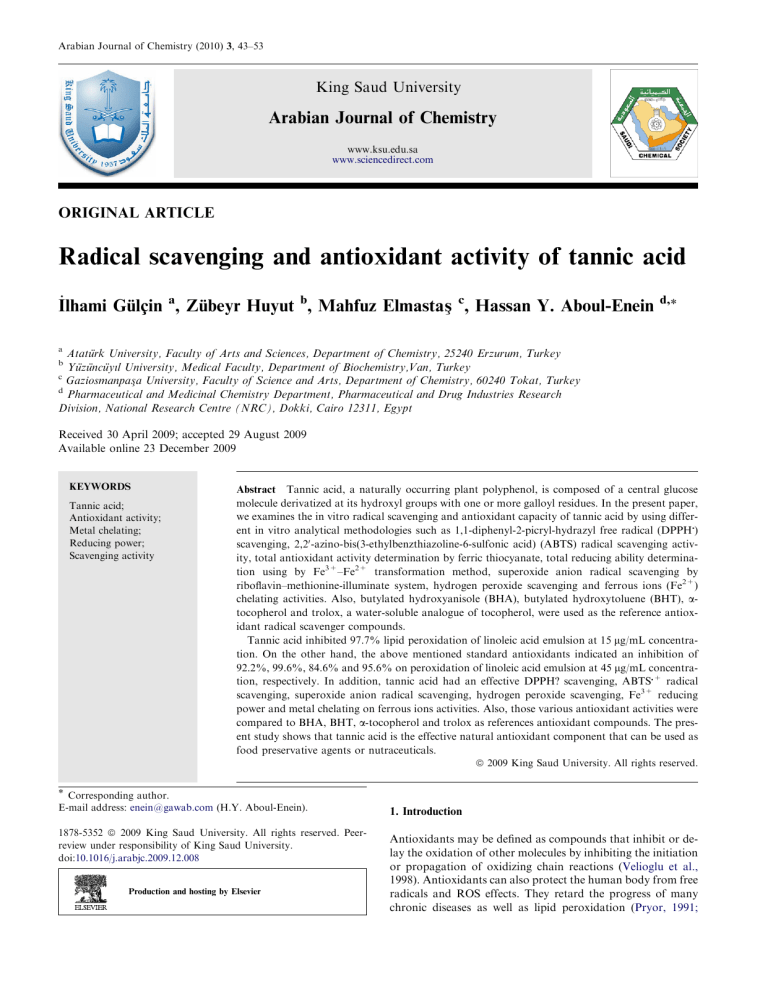
Arabian Journal of Chemistry (2010) 3, 43–53 King Saud University Arabian Journal of Chemistry www.ksu.edu.sa www.sciencedirect.com ORIGINAL ARTICLE Radical scavenging and antioxidant activity of tannic acid _ Ilhami Gülçin a, Zübeyr Huyut b, Mahfuz Elmastasß c, Hassan Y. Aboul-Enein d,* a Atatürk University, Faculty of Arts and Sciences, Department of Chemistry, 25240 Erzurum, Turkey Yüzüncüyıl University, Medical Faculty, Department of Biochemistry,Van, Turkey c Gaziosmanpasßa University, Faculty of Science and Arts, Department of Chemistry, 60240 Tokat, Turkey d Pharmaceutical and Medicinal Chemistry Department, Pharmaceutical and Drug Industries Research Division, National Research Centre (NRC), Dokki, Cairo 12311, Egypt b Received 30 April 2009; accepted 29 August 2009 Available online 23 December 2009 KEYWORDS Tannic acid; Antioxidant activity; Metal chelating; Reducing power; Scavenging activity Abstract Tannic acid, a naturally occurring plant polyphenol, is composed of a central glucose molecule derivatized at its hydroxyl groups with one or more galloyl residues. In the present paper, we examines the in vitro radical scavenging and antioxidant capacity of tannic acid by using different in vitro analytical methodologies such as 1,1-diphenyl-2-picryl-hydrazyl free radical (DPPH) scavenging, 2,20 -azino-bis(3-ethylbenzthiazoline-6-sulfonic acid) (ABTS) radical scavenging activity, total antioxidant activity determination by ferric thiocyanate, total reducing ability determination using by Fe3+–Fe2+ transformation method, superoxide anion radical scavenging by riboflavin–methionine-illuminate system, hydrogen peroxide scavenging and ferrous ions (Fe2+) chelating activities. Also, butylated hydroxyanisole (BHA), butylated hydroxytoluene (BHT), atocopherol and trolox, a water-soluble analogue of tocopherol, were used as the reference antioxidant radical scavenger compounds. Tannic acid inhibited 97.7% lipid peroxidation of linoleic acid emulsion at 15 lg/mL concentration. On the other hand, the above mentioned standard antioxidants indicated an inhibition of 92.2%, 99.6%, 84.6% and 95.6% on peroxidation of linoleic acid emulsion at 45 lg/mL concentration, respectively. In addition, tannic acid had an effective DPPH? scavenging, ABTS+ radical scavenging, superoxide anion radical scavenging, hydrogen peroxide scavenging, Fe3+ reducing power and metal chelating on ferrous ions activities. Also, those various antioxidant activities were compared to BHA, BHT, a-tocopherol and trolox as references antioxidant compounds. The present study shows that tannic acid is the effective natural antioxidant component that can be used as food preservative agents or nutraceuticals. ª 2009 King Saud University. All rights reserved. * Corresponding author. E-mail address: [email protected] (H.Y. Aboul-Enein). 1878-5352 ª 2009 King Saud University. All rights reserved. Peerreview under responsibility of King Saud University. doi:10.1016/j.arabjc.2009.12.008 Production and hosting by Elsevier 1. Introduction Antioxidants may be defined as compounds that inhibit or delay the oxidation of other molecules by inhibiting the initiation or propagation of oxidizing chain reactions (Velioglu et al., 1998). Antioxidants can also protect the human body from free radicals and ROS effects. They retard the progress of many chronic diseases as well as lipid peroxidation (Pryor, 1991; _ Gülçin et al. I. 44 2002). Natural antioxidants are known to exhibit a wide range of biological effects including antibacterial, antiviral, antiinflammatory, antiallergic, antithrombotic and vasodilatory activities. In fact, a fundamental property important for life is the antioxidant activity and this property may give rise to anticarcinogenicity, antimutagenicity and antiaging activity, among others (Cook and Samman, 1996). The antioxidant activity of phenolic compounds is mainly attributed to their redox properties, which allow them to act as reducing agents, hydrogen donors and quenchers of singlet oxygen. In addition, they may also possess metal chelation properties (Rice-Evans, 1995; Liyana-Pathirana and Shahidi, 2006). Phenolic acids are secondary metabolites widely distributed in the plant kingdom and are second only to flavonoids in terms of their dominance, suggesting that naturally occurring. Tannic acid is a plant polyphenol which is found, along with other condensed tannins, in several beverages including red wine, beer, coffee, black tea, green tea, and many foodstuffs such as grapes, pears, bananas, sorghum, black-eyed peas, lentils and chocolate (Chung et al., 1998a; King and Young, 1999). Similar to many polyphenols, tannic acid has been shown to possess antioxidant (Lopes et al., 1999; Ferguson, 2001; Wu et al., 2004; Andrade et al., 2005), antimutagenic (Ferguson, 2001; Horikawa et al., 1994; Chen and Chung, 2000) and anticarcinogenic properties (Horikawa et al., 1994; Athar et al., 1989; Gali et al., 1992; Nepka et al., 1999). The antioxidant mechanism of tannic acid is still far from being fully understood; therefore, it requires further investigation. For example, in the presence of copper ions, tannic acid acts either as a prooxidant, promoting DNA damage (Ferguson, 2001; Khan and Hadi, 1998; Khan et al., 2000), or as an antioxidant, suppressing hydroxyl radical formation (Andrade et al., 2005). Tannic acid is composed of a central glucose molecule derivatized at its hydroxyl groups with one or more galloyl residues (Fig. 1). Kinsella et al., 1993; Lai et al., 2001; Gülçin et al., 2004b, 2006). Also, antioxidants have been widely used as food additives to provide protection against oxidative degradation of foods (Gülçin et al., 2005b, 2004e). Oxidation of lipids, which is the main cause of quality deterioration in many food systems, may lead to off-flavors and formation of toxic compounds, and may lower the quality and nutritional value of foods. Furthermore, lipid oxidation is also associated with aging, membrane damage, heart disease and cancer (Ramarathnam et al., 1995). At the present time, the most commonly used antioxidants are BHA, BHT, propyl gallate (PG) and tert butylhydroquinone (TBHQ). Their safety of these antioxidants has recently been questioned due to toxicity (Sun and Fukuhara, 1997). Besides that BHA and BHT have suspected of being responsible for liver damage and carcinogenesis (Wichi, 1988; Sherwin, 1990). Also, BHT had little effect on mutagenicity at low concentrations, but significantly increased their mutagenicity at high concentrations (Shahidi and Wanasundara, 1992). It was reported that BHT may cause internal and external hemorrhaging at high doses that is severe enough to cause death in some strains of mice and guinea-pigs (Chen et al., 1992). Therefore, there is a growing interest on natural and safer antioxidants (Moure et al., 2001; Gülçin, 2006a; Oktay et al., 2003). Food antioxidants such as a-tocopherol, ascorbic acid, carotenoids, amino acids, peptides, proteins, flavonoids and other phenolic compounds might also play a significant role as physiological and dietary antioxidants, thereby augmenting the body’s natural resistance to oxidative damage (Shahidi, 2000). Development of safer natural antioxidants from extracts of oilseeds, spices and other plant materials that can replace synthetic antioxidants has been of interest (Van Ruth et al., 2001). Additionally, there has also been interest in preserving endogenous antioxidants in food products both for stabilization and for nutritional purposes (Bryngelsson et al., OH HO OH OH HO OH O O O HO O HO O OH Glucose O O O OH O O O OH OH OH HO O O HO O O O O O HO OH OH OH O HO HO O HO OH OH Gallic acid OH Tannic acid Figure 1 Chemical structure of tannic acid, a deca-galloyl glucose consisting of a center glucose molecule esterified at all five hydroxyl moieties with two gallic acid molecules. The shaded circle highlights pentagalloylglucose and the core structure of tannic acid. Radical scavenging and antioxidant activity of tannic acid It was reported that the polyphenolic nature of tannic acid, it’s relatively hydrophobic ‘‘core’’ and hydrophilic ‘‘shell’’ are the features responsible for its antioxidant action (Isenburg et al., 2006). Tannins also referred to as tannic acid, have a structure consisting of a central glucose and 10 galloyl groups. They are a type of water-soluble polyphenol that are present in the bark and fruits of many plants (Lopes et al., 1999), particularly in bananas, grapes, raisins, sorghum, spinach, red wine, persimmons, coffee, chocolate and tea (Wu et al., 2004; Chung et al., 1998b). Tannic acid is always used as a food additive. Its safe dosage ranges from 10 to 400 lg, depending on the type of food to which it is added (Chen and Chung, 2000). Also, several authors have demonstrated that tannic acid and other polyphenols have antimutagenic and anticarcinogenic activities. Moreover, the consumption of polyphenol-rich fruits, vegetables, and beverages, such as tea and red wine, has been linked with inhibitory and preventive effects in various human cancers and cardiovascular diseases, which may be related-at least in part-with the antioxidant activity of polyphenols (Andrade et al., 2005). In other studies, tannic acid inhibited skin, lung and forestomach tumors induced by polycyclic aromatic hydrocarbon carcinogens and N-methyl-N-nitrosourea in mice (Vance and Teel, 1989; Khan et al., 1988). This study is aimed to investigate the antioxidant and radical scavenging properties of tannic acid with different analytical methodology. The antioxidant potential of tannic acid was explained on the basis of total antioxidant activity by ferric thiocyanate method, total reducing capacity using the potassium ferricyanide reduction method, scavenging activity of free radicals such as DPPH, ABTS+, superoxide anion and chelation capacity of ferrous ions (Fe2+), hydrogen peroxide scavenging. Furthermore, an important goal of this investigation is to show the in vitro antioxidative effects of tannic acid as compared with commercial and standard antioxidants such as BHA, BHT, a-tocopherol and trolox commonly used by the food and pharmaceutical industry. 45 (Mitsuda et al., 1996) as described by Gülçin (2006b). For stock solutions, 10 mg of tannic acid was dissolved in 10 mL distillate water. Then, the solution which contains 15 lg/mL concentration of tannic acid solution in 2.5 mL of sodium phosphate buffer (0.04 M, pH 7.0) was added to 2.5 mL of linoleic acid emulsion in sodium phosphate buffer (0.04 M, pH 7.0). Therefore, 5 mL of the linoleic acid emulsion was prepared by mixing and homogenising 15.5 lL of linoleic acid, 17.5 mg/g of tween-20 as emulsifier, and 5 mL phosphate buffer (pH 7.0). On the other hand, 5 mL of control was composed of 2.5 mL of linoleic acid emulsion and 2.5 mL, 0.04 M sodium phosphate buffer (pH 7.0). The mixed solution (5 mL) was incubated at 37 C in polyethylene flask. The peroxide level was determined by reading the absorbance at 500 nm in a spectrophotometer (Shimadzu, UV-1208 UV–Vis spectrophotometer, Japan) after reaction with FeCl2 (3.5%) and thiocyanate (30%) at intervals during incubation. During the linoleic acid peroxidation, peroxides are formed and that leads to oxidation of Fe2+–Fe3+. The latter ions form a complex with ammonium thiocyanate and this complex has a maximum absorbance at 500 nm. This step was repeated every 5 h. The percentage inhibition values were calculated at this point (30 h). High absorbance indicates high linoleic acid emulsion peroxidation. The solutions without tannic acid were used as blank samples. Total antioxidant activity determination was performed triplicate. The inhibition percentage of lipid peroxidation in linoleic acid emulsion was calculated by following equation: AS inhibitation of lipid peroxidation ð%Þ ¼ 100 100 AC where, AC is the absorbance of control reaction which contains only linoleic acid emulsion and sodium phosphate buffer and AS is the absorbance in the presence of sample tannic acid or standard compounds (Gülçin, 2006a,b). 2.3. Ferric ions (Fe3+) reducing antioxidant power assay (FRAP) 2. Material and methods 2.1. Chemicals Tannic acid, riboflavin, methionine, 2,20 -azino-bis(3-ethylbenzthiazoline-6-sulfonic acid) (ABTS), butylated hydroxyanisole (BHA), butylated hydroxytoluene (BHT), nitroblue tetrazolium (NBT), the stable free radical 1,1-diphenyl-2-picryl-hydrazyl (DPPH), 3-(2-pyridyl)-5,6-bis (4-phenyl-sulfonic acid)1,2,4-triazine (ferrozine), a-tocopherol, 6-hydroxy-2,5,7,8-tetramethylchroman-2-carboxylic acid (trolox), linoleic acid, atocopherol, polyoxyethylenesorbitan monolaurate (tween-20) and trichloroacetic acid (TCA) were obtained from Sigma (Sigma–Aldrich GmbH, Sternheim, Germany). Ammonium thiocyanate was purchased from Merck. All other chemicals used were in analytical grade and obtained from either Sigma–Aldrich or Merck. 2.2. Total antioxidant activity determination by ferric thiocyanate method (FTC) The antioxidant activity of tannic acid and standards was determined according to the ferric thiocyanate method The reducing power of tannic acid was determined by the method of Oyaizu (1986) with slight modification (Gülçin, 2006a). Different concentrations of tannic acid (15–45 lg/ mL) in 1 mL of distilled water were mixed with sodium phosphate buffer (2.5 mL, 0.2 M, pH 6.6) and potassium ferricyanide [K3Fe(CN)6] (2.5 mL, 1%). The mixture was incubated at 50 C for 20 min. Aliquots (2.5 mL) of trichloroacetic acid (10%) were added to the mixture. The upper layer of solution (2.5 mL) was mixed with distilled water (2.5 mL) and FeCl3 (0.5 mL, 0.1%), and the absorbance was measured at 700 nm in a spectrophotometer. Increased absorbance of the reaction mixture indicates an increase of reduction capability (Büyükokuroğlu et al., 2001; Gülçin et al., 2005a). 2.4. Ferrous ions (Fe2+) chelating activity The chelating of ferrous ions by tannic acid and standards was estimated by the method of Dinis et al. (1994). Briefly, tannic acid (15 lg/mL) in 0.4 mL was added to a solution of 2 mM FeCl2 (0.2 mL). The reaction was initiated by the addition of 5 mM ferrozine (0.4 mL) and total volume was adjusted to 4 mL of ethanol. Then, the mixture was shaken vigorously _ Gülçin et al. I. 46 and left at room temperature for ten minutes. Absorbance of the solution was then measured spectrophotometrically at 562 nm. The percentage of inhibition of ferrozine–Fe2+ complex formation was calculated by using the formula given bellow: AS Ferrous ions ðFe2þ Þ chelating effect ð%Þ ¼ 1 100 AC where, AC is the absorbance of control and AS is the absorbance in the presence of tannic acid or standards. The control contains FeCl2 and ferrozine, complex formation molecules (Gülçin, 2006b, 2004a). 2.5. Hydrogen peroxide scavenging activity The hydrogen peroxide scavenging assay was carried out following the procedure of Ruch et al. (1989). For this aim, a solution of H2O2 (43 mM) was prepared in phosphate buffer (0.1 M, pH 7.4). Tannic acid at the 15 lg/mL concentration in 3.4 mL phosphate buffer was added to 0.6 mL of H2O2 solution (0.6 mL, 43 mM). The absorbance value of the reaction mixture was recorded at 230 nm. Blank solution was containing the sodium phosphate buffer without H2O2. The concentration of hydrogen peroxide (mM) in the assay medium was determined using a standard curve (r2: 0.9895): Absorbance ¼ 0:038 ½H2 O2 þ 0:4397 The percentage of H2O2 scavenging of tannic acid and standard compounds was calculated using the following equation: AS H2 O2 scavenging effect ð%Þ ¼ 1 100 AC where, AC is the absorbance of the control and AS is the absorbance in the presence of the sample tannic acid or standards (Gülçin, 2006b; Elmastasß et al., 2005). 2.6. Radical scavenging activity The free radical chain reaction is widely accepted as a common mechanism of lipid peroxidation. Radical scavengers may directly react with and quench peroxide radicals to terminate the peroxidation chain reaction and improve the quality and stability of food products (Soares et al., 1997). Assays based upon the use of DPPH and ABTS+ radicals are among the most popular spectrophotometric methods for determination of the antioxidant capacity of food, beverages and vegetable extracts (Bendini et al., 2006). The both chromogen radical compounds can directly react with antioxidants. Additionally, DPPH and ABTS+ scavenging methods have been used to evaluate the antioxidant activity of compounds due to the simple, rapid, sensitive, and reproducible procedure (Özcelik et al., 2003). Also, radical scavenging activity is very important due to the deleterious role of free radicals in foods and in biological systems. Diverse methods are currently used to assess the antioxidant activity of plant phenolic compounds. Chemical assays are based on the ability to scavenge synthetic free radicals, using a variety of radical-generating systems and methods for detection of the oxidation end-point. ABTS+ or DPPH radical scavenging methods are common spectrophotometric procedures for determining the antioxidant capacities of components. When an antioxidant added to the radicals there is a degree of decolorization owing to the presence of the antioxidants which reverses the formation of the DPPH radical and ABTS+ cation: DPPH þ AH ! DPPH2 þ A ABTS þ AH ! ABTSþ þ A These chromogens (the violet DPPH radical and the blue green ABTS radical cation) are easy to use, have a high sensitivity, and allow for rapid analysis of the antioxidant activity of a large number of samples. These assays have been applied to determine the antioxidant activity of pure components (Awika et al., 2003; van den Berg et al., 2000a; Yu et al., 2002). In this study, three radical scavenging methods were used to assess the determination of potential radical scavenging activities of tannic acid, namely ABTS+ radical scavenging, DPPH radical scavenging and Æsuperoxide anion radical scavenging activity. 2.6.1. DPPH free radical scavenging activity The methodology of Blois (1958) previously described by Gülçin (2006b) was used with slight modifications in order to assess the DPPH free radical scavenging capacity of tannic acid. Wherein the bleaching rate of a stable free radical, DPPH is monitored at a characteristic wavelength in the presence of the sample. In its radical form, DPPH absorbs at 517 nm, but upon reduction by an antioxidant or a radical species its absorption decreases. Briefly, 0.1 mM solution of DPPH was prepared in ethanol and 0.5 mL of this solution was added 1.5 mL of tannic acid solution in ethanol at different concentrations (15–45 lg/ mL). These solutions were vortexed thoroughly and incubated in dark. A half hour later, the absorbance was measured at 517 nm against blank samples. Lower absorbance of the reaction mixture indicates higher DPPH free radical scavenging activity. A standard curve was prepared using different concentrations of DPPH. The DPPH concentration scavenging capacity was expressed as mM in the reaction medium and calculated from the calibration curve determined by linear regression (r2: 0.9845): Absorbance ¼ 9:692 ½DPPH þ 0:215 The capability to scavenge the DPPH radical was calculated using the following equation: AS DPPH scavenging effect ð%Þ ¼ 1 100 AC where AC is the absorbance of the control which contains DPPH solution and AS is the absorbance in the presence of tannic acid (Gülçin et al., 2004c; Elmastas et al., 2006b). 2.6.2. ABTS radical cation decolorization assay The spectrophotometric analysis of ABTS+ radical scavenging activity was determined according to method of Re et al. (1999). This method is based on the ability of antioxidants to quench the long-lived ABTS radical cation, a blue/green chromophore with characteristic absorption at 734 nm, in comparison to that of BHA, BHT, a-tocopherol and trolox, a water-soluble a-tocopherol analogue. The ABTS+ was Radical scavenging and antioxidant activity of tannic acid Absorbance ¼ 4:6788 ½ABTSþ þ 0:199 The scavenging capability of ABTS+ radical was calculated using the following equation: AS ABTSþ scavenging effect ð%Þ ¼ 1 100 AC where, AC is the initial concentration of the ABTS+ and AS is absorbance of the remaining concentration of ABTS+ in the presence of tannic acid (Gülçin, 2006b). 2.6.3. Superoxide anion radical scavenging activity Superoxide radicals were generated by method of Beauchamp and Fridovich (1971) described by Zhishen et al. (1999) with slight modification. Superoxide radicals are generated in riboflavin, methionine, illuminate and assayed by the reduction of NBT to form blue formazan (NBT2+). All solutions were prepared in 0.05 M phosphate buffer (pH 7.8). The photo-induced reactions were performed using fluorescent lamps (20 W). The concentration of tannic acid in the reaction mixture was 15 lg/ mL. The total volume of the reactant mixture was 3 mL and the concentrations of the riboflavin, methionine and NBT was 1.33 · 105, 4.46 · 105 and 8.15 · 108 M, respectively. The reactant was illuminated at 25 C for 40 min. The photochemically reduced riboflavins generated O 2 which reduced NBT to form blue formazan. The unilluminated reaction mixture was used as a blank. The absorbance was measured at 560 nm. Tannic acid was added to the reaction mixture, in which O 2 was scavenged, thereby inhibiting the NBT reduction. Decreased absorbance of the reaction mixture indicates increased superoxide anion scavenging activity. The inhibition percentage of superoxide anion generation was calculated by using the following formula: AS O 100 scavenging effect ð%Þ ¼ 1 2 AC where, AC is the absorbance of the L-ascorbic acid and AS is the absorbance of tannic acid or standards (Gülçin et al., 2003, 2004d). 2.7. Statistical analysis The experimental results were performed in triplicate. The data were recorded as mean ± standard deviation and analysed by SPSS (version 11.5 for Windows 2000, SPSS Inc.). One-way analysis of variance was performed by ANOVA procedures. Significant differences between means were determined by Duncan’s Multiple Range tests. P < 0.05 was regarded as a significant and p < 0.01 was very significant. 3. Results and discussion A wide variety of in vitro methods have been set up to assess radical scavenging ability and antioxidant activity. Antioxidant capacity is widely used as a parameter for medicinal bioactive components. Different artificial species have been used such as 2,2-azinobis-3-ethylbenzothiazoline-6-sulfonic acid (ABTS) (Gülçin, 2006a, b; Villãno et al., 2004), 1,1-diphenyl2-picrylhydrazyl (DPPH) Gülçin et al., 2006c; Villãno et al., 2007, and N,N-dimethyl-p-phenylendiamine (DMPD) Fogliano et al., 1999, OH radicals scavenging activity (Mathew and Abraham, 2006), ferrous ions (Fe2+) chelating activity H2O2 scavenging activity (Gülçin, 2007), Fe3+–Fe2+ reducing activity (Gülçin, 2005). In this study, the antioxidant activity of the tannic acid was compared to BHA, BHT, a-tocopherol and its water-soluble analogue trolox. The antioxidant activity of the tannic acid, BHA, BHT, a-tocopherol and trolox has been evaluated in a series of in vitro tests namely: DPPH free radical scavenging, ABTS+ radical scavenging, total antioxidant activity by ferric thiocyanate method, reducing power, scavenging of superoxide anion radical-generated non-enzymatic system, hydrogen peroxide scavenging and metal chelating activities. 3.1. Total antioxidant activity determination in linoleic acid emulsion system by ferric thiocyanate method Lipid peroxidation contains a series of free radical-mediated chain reaction processes and is also associated with several types of biological damage. The role of free radicals and ROS is becoming increasingly recognized in the pathogenesis of many human diseases, including cancer, aging and atherosclerosis (Perry et al., 2000). The ferric thiocyanate method measures the amount of peroxide produced during the initial 2.5 Control BHA-45 µg/mL BHT-45 µg/mL Tocopherol-45 µg/mL Trolox-45 µg/mL Tannic acid-15 µg/mL Tannic acid-30 µg/mL Tannic acid-45 µg/mL 2 Absorbance (500) produced by reacting 2 mM ABTS in H2O with 2.45 mM potassium persulfate (K2S2O8), stored in the dark at room temperature for four hours. Before usage, the ABTS+ solution was diluted to get an absorbance of 0.750 ± 0.025 at 734 nm with sodium phosphate buffer (0.1 M, pH 7.4). Then, 1 mL of ABTS+ solution was added 3 mL of tannic acid solution in ethanol at different concentrations (15–45 lg/mL). After 30 min, the percentage inhibition of at 734 nm was calculated for each concentration relative to a blank absorbance. Solvent blanks were run in each assay. The extent of decolorization is calculated as percentage reduction of absorbance. For preparation of a standard curve, different concentrations of ABTS+ was used. The ABTS+ concentration (mM) in the reaction medium was calculated from the following calibration curve, determined by linear regression (r2: 0.9841): 47 1.5 1 0.5 0 0 10 20 30 Incubation time (h) 40 50 Figure 2 Total antioxidant activities of tannic acid (15 lg/mL) and standard antioxidant compounds such as BHA, BHT, atocopherol and trolox at the concentration of 45 lg/mL (BHA: butylated hydroxyanisole, BHT: butylated hydroxytoluene). Total antioxidant activity determined by ferric thiocyanate method (FTC). _ Gülçin et al. I. 48 stages of oxidation which is the primary product of lipid oxidation. Total antioxidant activity of tannic acid, BHA, BHT, atocopherol and trolox was determined by the ferric thiocyanate method in the linoleic acid system. Tannic acid showed effective antioxidant activity in this system. The effect of different concentration (15–45 lg/mL) of tannic acid on lipid peroxidation of linoleic acid emulsion is shown in Fig. 2. At these concentrations, tannic acid caused 97.7%, 98% and 98.4% lipid peroxidation inhibition of linoleic acid emulsion. Their activities are greater than 45 lg/mL concentration of BHA (92.2%), a-tocopherol (84.6%) and trolox (95.6%), but close to BHT (99.6%). Consequently, these results clearly indicate that tannic acid has an effective and powerful antioxidant activity by ferric thiocyanate method. 3.2. Total reductive capability using the potassium ferricyanide reduction method Antioxidants can be explained as reductants, and inactivation of oxidants by reductants can be described as redox reactions in which one reaction species is reduced at the expense of the oxidation of the other. The presence of reductants such as antioxidant substances in the antioxidant samples causes the reduction of the Fe3+/ferricyanide complex to the ferrous form. Therefore, Fe2+ can be monitored by measuring the formation of Perl’s Prussian blue at 700 nm (Chung et al., 2002). In this assay, the yellow colour of the test solution changes to various shades of green and blue depending on the reducing power of antioxidant samples. The reducing capacity of a compound may serve as a significant indicator of its potential antioxidant activity. As shown from Fig. 3, tannic acid had effective and powerful reducing power using the potassium ferricyanide reduction method when compared to the standards (BHA, BHT, atocopherol and trolox). For the measurements of the reductive ability of tannic acid, the Fe3+–Fe2+ transformation was investigated in the presence of tannic acid using the method of Oyaizu (1986). Reducing power will increase accordingly to the increase in absorbance. As more Fe3+ are reduced to the ferrous form or when more electrons are donated by antioxidant components (4). Reductants also react with certain precursors of peroxide, thus preventing the formation of peroxide (Jayaprakasha et al., 2001). At different concentrations (15–45 lg/mL), tannic acid demonstrated powerful reducing ability (r2: 0.9474) and these differences were statistically significant (p > 0.01). The reducing power of tannic acid, BHA, BHT, a-tocopherol and trolox increased steadily with increasing concentration of samples. Reducing power of tannic acid and standard compounds exhibited the following order: tannic acid > BHA BHT > a-tocopherol > trolox. The results on reducing power demonstrate the electron donor properties of tannic acid thereby neutralizing free radicals by forming stable products. The outcome of the reducing reaction is to terminate the radical chain reactions that may otherwise be very damaging. 3.3. Ferrous ions chelating capacity Iron, in nature, can be found as either ferrous or ferric ion, with the latter form of ferric ion predominating in foods. Ferrous ions (Fe2+) chelation may render important antioxidative effects by retarding metal-catalyzed oxidation. Ferrous ion (Fe2+) chelating activities of tannic acid, BHA, BHT, atocopherol and trolox are shown in Table 1. The chelating effect of ferrous ions (Fe2+) by the tannic acid and standards was determined according to the method of Dinis et al. (1994). Among the transition metals, iron is known as the most important lipid oxidation pro-oxidant due to its high reactivity. The effective ferrous ions chelators may also afford protection against oxidative damage by removing iron (Fe2+) that may otherwise participate in HO generating Fenton type reactions. Fe2þ þ H2 O2 þ Fe3þ þ OH þ OH ðFenton reactionÞ Absorbance (700 nm) 3 BHA BHT α-Tocopherol Trolox Tannic acid Ferric (Fe3+) ions also produce radicals from peroxides although the rate is tenfold less than that of ferrous (Fe2+) ions (Miller et al., 1996). Fe2+ ion is the most powerful 2 1 0 0 15 30 45 Concentration (µg/mL) Figure 3 Total ferric reducing power (FRAP) of different concentrations (15–45 lg/mL) of tannic acid and reference antioxidants; BHA, BHT, a-tocopherol and trolox (BHA: butylated hydroxyanisole, BHT: butylated hydroxytoluene). Total ferric reducing power determined according to the feerric ions (Fe3+) – errous ions (Fe2+) transformation. The reducing power was estimated based on the absorbance reading at 700 nm with a spectrophotometer. Values are expressed as mean ± standard deviation of three replicate determinations. Table 1 Comparison of hydrogen peroxide (H2O2) scavenging activity, ferrous ion (Fe2+) chelating activitiy and superoxide anion radical (O 2 ) scavenging activity of tannic acid and standard antioxidant compounds such as BHA, BHT, atocopherol and trolox at the concentration of 15 lg/mL (BHA: butylated hydroxyanisole, BHT: butylated hydroxytoluene). BHA BHT a-Tocopherol Trolox Tannic acid H2O2 scavenging activity (%) Ferrous ion chelating activity (%) Superoxide scavenging activity (%) 36.4 ± 3.5 34.3 ± 4.1 39.3 ± 2.9 25.5 ± 3.3 52.8 ± 5.4 69.9 ± 7.5 60.0 ± 9.3 31.3 ± 5.5 45.2 ± 6.2 66.8 ± 6.2 75.3 ± 6.5 70.2 ± 7.1 22.2 ± 3.3 16.0 ± 1.9 69.1 ± 4.2 Radical scavenging and antioxidant activity of tannic acid pro-oxidant among the various species of metal ions (Halliwell and Gutteridge, 1984). Minimizing ferrous (Fe2+) ions may afford protection against oxidative damage by inhibiting production of ROS and lipid peroxidation. Ferrozine can quantitatively form complexes with Fe2+ in this method. In the presence of chelating agents the complex formation is disrupted, resulting in a decrease in the red colour of the complex. Measurement of colour reduction, therefore, allows estimating the metal chelating activity of the coexisting chelator (Elmastas et al., 2006a). Lower absorbance indicates higher metal chelating activity. In this assay, tannic acid interfered with the formation of ferrous and ferrozine complex. It was suggested that they have chelating activity and are able to capture ferrous ion before ferrozine. The metal chelating effects of tannic acid is summarized in Table 1. We suggested that tannic acid may chelate the ferrous ions with the hydroxyl and carboxylate groups. It was reported that the compounds with structures containing two or more of the following functional groups: – OH, –SH, –COOH, –PO3H2, –C‚O, –NR2, –S– and –O– in a favourable structure–function configuration can show metal chelation activity (Gülçin, 2006b; Lindsay et al., 1996; Yuan et al., 2005; Kazazica et al., 2006). Kazazica et al. (2006) demonstrated that flavonoids like kaempferol chelated Cu2+ and Fe2+ on the functional carbonyl groups. The difference between tannic acid and the control was found statistically significant (p > 0.01). Tannic acid exhibited 66.8 ± 6.2% chelation of ferrous ion at 15 lg/mL concentration. On the other hand, the percentages of metal chelating capacity of same concentration of BHA, BHT, a-tocopherol and trolox were found as 69.9 ± 7.5, 60.0 ± 9.3, 31.3 ± 5.5 and 45.2 ± 6.2%, respectively. These results show that the ferrous ion chelating effect of tannic acid was similar to BHA (p > 0.05) and BHT (p > 0.05) but statistically higher than a-tocopherol (p < 0.05) and trolox (p < 0.05). Metal chelating capacity was significant since it reduced the concentration of the catalysing transition metal in lipid peroxidation. It was reported that chelating agents are effective as secondary antioxidants because they reduce the redox potential thereby stabilizing the oxidized form of the metal ion. The data obtained from Table 1 reveal that tannic acid demonstrates a marked capacity for iron binding, suggesting that their main action as peroxidation protector may be related to its iron binding capacity. 3.4. Hydrogen peroxide scavenging activity Hydrogen peroxide has strong oxidizing properties. It can be formed in vivo by many oxidizing enzymes such as superoxide dismutase. It can cross membranes and may slowly oxidize a number of compounds. The ability of tannic acid to scavenge hydrogen peroxide was determined according to the method of Ruch et al. (1989) as shown in Table 1 and compared with that of BHA, BHT, a-tocopherol and trolox as standards. Hydrogen peroxide scavenging activity of tannic acid at the used concentration (15 lg/mL) was found to be 52.8 ± 5.4%. On the other hand, BHA, BHT, a-tocopherol and trolox exhibited 36.4 ± 3.5, 34.3 ± 4.1, 39.3 ± 2.9, and 25.5 ± 3.3% hydrogen peroxide scavenging activity at the same concentration, respectively. These results showed that tannic acid had an effective hydrogen peroxide scavenging activity. At the above concentration, the hydrogen peroxide scavenging effect of tannic acid 49 and four standard compounds decreased in the order of tannic acid > a-tocopherol > BHA > BHT > trolox. Hydrogen peroxide itself is not very reactive; however it can sometimes be toxic to cell because it may give rise to hydroxyl radical in the cells. Addition of hydrogen peroxide to cells in culture can lead to transition metal ion-dependent OH radicals-mediated oxidative DNA damage. Levels of hydrogen peroxide at or below about 20–50 mg seem to have limited cytotoxicity to many cell types. Thus, removing hydrogen peroxide as well as superoxide anion is very important for protection of pharmaceuticals and food products. 3.5. Radical scavenging activity Radical scavenging activities are very important due to the deleterious role of free radicals in foods and in biological systems. Diverse methods are currently used to assess the antioxidant activity of plant phenolic compounds. Chemical assays are based on the ability to scavenge synthetic free radicals, using a variety of radical-generating systems and methods for detection of the oxidation end-point. ABTS+ or DPPH radical scavenging methods are common spectrophotometric procedures for determining the antioxidant capacities of components. These chromogens (the violet DPPH radical and the blue green ABTS radical cation) are easy to use, have a high sensitivity, and allow for rapid analysis of the antioxidant activity of a large number of samples. These assays have been applied to determine the antioxidant activity of pure components (Awika et al., 2003; Yu et al., 2002; van den Berg et al., 2000b). DPPH has been widely used to evaluate the free radical scavenging effectiveness of various antioxidant substances (Özcelik et al., 2003). In the DPPH assay, the antioxidants were able to reduce the stable radical DPPH to the yellow coloured diphenyl-picrylhydrazine. The method is based on the reduction of alcoholic DPPH solution in the presence of a hydrogen-donating antioxidant due to the formation of the non-radical form DPPH–H by the reaction. DPPH is usually used as a reagent to evaluate free radical scavenging activity of antioxidants (Oyaizu, 1986). DPPH is a stable free radical and accepts an electron or hydrogen radical to become a stable diamagnetic molecule (Soares et al., 1997). With this method it was possible to determine the antiradical power of an antioxidant by measuring of a decrease in the absorbance of DPPH at 517 nm. Resulting a colour change from purple to yellow, the absorbance decreased when the DPPH was scavenged by an antioxidant through donation of hydrogen to form a stable DPPH molecule. In the radical form, this molecule had an absorbance at 517 nm which disappeared after acceptance of an electron or hydrogen radical from an antioxidant compound to become a stable diamagnetic molecule. Fig. 4 illustrates a significant decrease (p < 0.01) in the concentration of DPPH radical due to the scavenging ability of tannic acid and standards. BHA, BHT, a-tocopherol and trolox were used as references. The scavenging effect of tannic acid and standards on the DPPH radical decreased in the order of BHT > tannic acid > BHA > a-tocopherol > trolox, which were 96.2%, 95.1%, 67.8%, 64.9%, and 29.4%, at the concentration of 45 lg/mL, respectively. DPPH free radical scavenging activity of tannic acid also increased with an increasing concentration (r2: 8246). _ Gülçin et al. I. 50 2.7 Absorbance (517 nm) Tocopherol Trolox BHA BHT Tannic acid 1.8 0.9 0 0 15 30 45 Concentration (µg/mL ) Figure 4 DPPH free radical scavenging activity of different concentrations (15–45 lg/mL) of tannic acid and reference antioxidants; BHA, BHT, a-tocopherol and trolox (BHA: butylated hydroxyanisole, BHT: butylated hydroxytoluene; DPPH: 1,1diphenyl-2-picryl-hydrazyl free radical). Generation of the ABTS radical cation forms the basis of one of the spectrophotometric methods that have been applied to the measurement of the total antioxidant activity of pure substances solutions, aqueous mixtures and beverages (Miller et al., 1996). A more appropriate format for the assay is a decolorization technique in that the radical is generated directly in a stable form prior to reaction with putative antioxidants. The improved technique for the generation of ABTS+ described here involves the direct production of the blue/green ABTS+ chromophore through the reaction between ABTS and potassium persulfate. All the tested compounds exhibited affectual radical cation scavenging activity. As seen in Fig. 5, tannic acid had effective ABTS+ radical scavenging activity in a concentration-dependent manner (15–45 lg/mL). There is a significant decrease (p < 0.01) in the all of concentration of ABTS+ due to the scavenging capacity of all tannic acid concentrations. Also, the scavenging effect of tannic acid and standards on the ABTS+ decreased in that order: BHA BHT tannic acid > a-tocopherol > trolox, which were 100%, 97.8%, Absorbance (734 nm) 0.9 0.6 BHA BHT Tocopherol Trolox Tannic acid 0.3 0 0 15 30 45 96.9%, 86.3%, and 4.4%, at the concentration of 45 lg/mL, respectively. Also, no significant differences in ABTS+ scavenging potential could be determined among tannic acid, BHA and BHT. Superoxide is biologically quite toxic and is deployed by the immune system to kill invading microorganisms. It is an oxygen-centred radical with selective reactivity. It also produced by a number of enzyme systems in autooxidation reactions and by non-enzymatic electron transfers that univalently reduce molecular oxygen. The biological toxicity of superoxide is due to its capacity to inactivate iron–sulfur cluster containing enzymes, which are critical in a wide variety of metabolic pathways, thereby liberating free iron in the cell, which can undergo Fenton-chemistry and generate the highly reactive hydroxyl radical. It can also reduce certain iron complex such as cytochrome c. Superoxide anions are a precursor to active free radicals that have potential of reacting with biological macromolecules and thereby inducing tissue damage (Halliwell and Gutteridge, 1984). It has been implicated in several pathophysiological processes due to its transformation into more reactive species such as hydroxyl radical that initiate lipid peroxidation. Also, superoxide has been observed to directly initiate lipid peroxidation (Wickens, 2001). In addition, it has been reported that antioxidant properties of some flavonoids are effective mainly via scavenging of superoxide anion radical (Yen and Duh, 1994). Superoxide anion plays an important role in the formation of other ROS such as hydrogen peroxide, hydroxyl radical, and singlet oxygen, which induce oxidative damage in lipids, proteins and DNA (Pietta, 2000). Superoxide radical is normally formed first, and its effects can be magnified because it produces other kinds of free radicals and oxidizing agents (Liu et al., 1997). Superoxide anion derived from dissolved oxygen by riboflavin/methionine/illuminate system and reduces NBT in this system. In this method, superoxide anion reduces the yellow dye (NBT2+) to produce the blue formazan which is measured spectrophotometrically at 560 nm. Antioxidants are able to inhibit the blue NBT formation (Cos et al., 1998; Parejo et al., 2002). The decrease of absorbance at 560 nm with antioxidants indicates the consumption of superoxide anion in the reaction mixture. Table 1 shows the inhibition percentage of superoxide radical generation by 15 lg/mL concentration of tannic acid and standards. The inhibition of superoxide radical generation results of tannic acid and standards were found to be similar statistically. As shown in Table 1, the percentage inhibition of superoxide anion radical generation by 15 lg/mL concentration of tannic acid was found as 69.1 ± 4.2%. On the other hand, at the same concentration, BHA, BHT and a-tocopherol and trolox exhibited 75.3 ± 6.5, 70.2 ± 7.1, 22.2 ± 3.3 and 16.0 ± 1.9% superoxide anion radical scavenging activity, respectively. According to these results, tannic acid had similar superoxide anion radical scavenging activity to BHA and BHT; however, it had higher superoxide anion radical scavenging activity than a-tocopherol and trolox. Concentration (µg/mL) Figure 5 ABTS radical scavenging activity of different concentrations (15–45 lg/mL) of tannic acid and reference antioxidants; BHA, BHT, a-tocopherol and trolox (BHA: butylated hydroxyanisole, BHT: butylated hydroxytoluene; ABTS+: 2,20 -azinobis(3-ethylbenzthiazoline-6-sulfonic acid). 4. Conclusion According to data obtained from the present study, tannic acid was found to be an effective antioxidant in different in vitro assay including reducing power, DPPH radical. ABTS radical Radical scavenging and antioxidant activity of tannic acid and superoxide anion radical scavenging, hydrogen peroxide scavenging and metal chelating activities when it is compared to standard antioxidant compounds such as BHA, BHT, tocopherol, a natural antioxidant, and trolox which are water-soluble analogue of tocopherol. Based on the discussion above, it can be used for minimizing or preventing lipid oxidation in food products, retarding the formation of toxic oxidation products, maintaining nutritional quality and prolonging the shelf life of foods and pharmaceuticals. References Andrade, R.G., Dalvi, L.T., Silva, J.M.C., Lopes, G.K.B., Alonso, A., Hermes-Lima, M., 2005. The antioxidant effect of tannic acid on the in vitro copper-mediated formation of free radicals. Archive of Biochemistry and Biophysics 437, 1. Athar, M., Khan, W.A., Mukhtar, H., 1989. Effect of dietary tannic acid on epidermal, lung, and forestomach polycyclic aromatic hydrocarbon metabolism and tumorigenicity in Sencar mice. Cancer Research 49, 5784. Awika, J.M., Rooney, L.W., Wu, X., Prior, R.L., Cisneros-Zevallos, L., 2003. Screening methods to measure antioxidant activity of Sorghum (Sorghum ialmatei) and Sorghum product. Journal of Agricultural and Food Chemistry 51, 6657. Beauchamp, C., Fridovich, I., 1971. Superoxide dismutase: improved assays and an assay applicable to acrylamide gels. Analytical Biochemistry 44, 276. Bendini, A.,ÆCerretani, L.,ÆPizzolante, L.,ÆToschi, T.G.,ÆGuzzo, F.,ÆCeoldo, S., Marconi, A.M.,ÆAndreetta, F., Levi, M., 2006. Phenol content related to antioxidant and antimicrobial activities of Passiflora spp. extracts. European Food Research and Technology 223, 102. Blois, M.S., 1958. Antioxidant determinations by the use of a stable free radical. Nature 26, 1199. Bryngelsson, S., Dimberg, LH., Kamal-Eldin, A., 2002. Effects of commercial processing on levels of antioxidants in oats (Avena sativa L.). Journal of Agricultural and Food Chemistry 50, 1890. _ Oktay, M., Küfrevioğlu, Ö.I., _ 2001. Büyükokuroğlu, M.E., Gülçin, I., In vitro antioxidant properties of dantrolene sodium. Pharmacological Research 44, 491. Chen, S.C., Chung, K.T., 2000. Mutagenicity and antimutagenicity of tannic acid and its related compounds. Food and Chemical Toxicology 38, 1. Chen, C.H., Pearson, A.M., Gray, J.I., 1992. Effects of synthetic antioxidants (BHA, BHT and PG) on the mutagenicity of IQ-like compounds. Food Chemistry 43, 177. Chung, K.T., Wong, T.Y., Wei, C.I., Huang, Y.W., Lin, Y., 1998a. Tannins and human health: a review. Critical Review in Food Sciences and Nutrition 38, 421. Chung, K.T., Wong, T.Y., Wei, C.I., Huang, Y.W., 1998b. Tannins and human health: a review. Critical Review in Food Science and Nutrition 38, 421. Chung, Y.C., Chang, C.T., Chao, W.W., Lin, C.F., Chou, S.T., 2002. Antioxidative activity and safety of the 50% ethanolic extract from red bean fermented by Bacillus subtilis IMR-NK1. Journal of Agriculture and Food Chemistry 50, 2454. Cook, N.C., Samman, S., 1996. Flavonoids: chemistry, metabolism, cardioprotective effects and dietary sources. Journal of Nutritional Biochemistry 7, 66. Cos, P., Ying, L.Y., Calomme, M., Hu, J.H., Cimanga, K., Van Poel, B., Pieters, L., Vlietinck, A.J., Berghe, D.V., 1998. Structure activity relationships and classification of flavonoids as inhibitors of xanthine oxidase and superoxide scavengers. Journal of Natural Products 61, 71. Dinis, T.C.P., Madeira, V.M.C., Almeida, L.M., 1994. Action of phenolic derivates (acetoaminophen, salycilate, and 5-aminosalyc- 51 ilate) as inhibitors of membrane lipid peroxidation and as peroxyl radical scavengers. Archive of Biochemistry and Biophysics 315, 161. _ 2005. Investigation of _ Öztürk, L., Gökçe, I., Elmastasß, M., Gülçin, I., antioxidant properties of spearmint (Mentha spicata L.). Asian Journal of Chemistry 17, 137. _ Öztürk, L., Gülçin, I., _ Isßıldak, Ö., AboulElmastas, M., Türkekul, I., Enein, H.Y., 2006a. The antioxidant activity of two wild edible mushrooms (Morchella vulgaris and Morchella esculanta). Combinatorial Chemistry and High Throughput Screening 6, 443. _ Beydemir, S _ AboulElmastasß, M., Gülçin, I., ß ., Küfrevioğlu, Ö.I., Enein, H.Y., 2006b. A study on the in vitro antioxidant activity of juniper (Juniperus communis L.) seeds extracts. Analytical Letters 39, 47. Ferguson, L.R., 2001. Role of plant polyphenols in genomic stability. Mutation Research 75, 89. Fogliano, V., Verde, V., Randazzo, G., Ritieni, A., 1999. Method for measuring antioxidant activity and its application to monitoring the antioxidant capacity of wines. Journal of Agricultural and Food Chemistry 47, 1035. Gali, H.U., Perchellet, E.M., Klish, D.S., Johnson, J.M., Perchellet, J.P., 1992. Hydrolyzable tannins: potent inhibitors of hydroperoxide production and tumor promotion in mouse skin treated with 12-O-tetradecanoylphobol-13-acetate in vivo. International Journal of Cancer 51, 425. _ 2005. The antioxidant and radical scavenging activities of Gülçin, I., black pepper (Piper nigrum) seeds. International Journal of Food Sciences and Nutrition 56, 491–499. _ 2006a. Antioxidant activity of caffeic acid (3,4-dihydroxyGülçin, I., cinnamic acid). Toxicology 217, 213. _ 2006b. Antioxidant and antiradical activities of L-carnitin. Gülçin, I., Life Sciences 78, 803–811. _ 2007. Comparison of in vitro antioxidant and antiradical Gülçin, I., activities of L-tyrosine and L-dopa. Amino Acids 32, 43. _ Oktay, M., Kireçci, E., Küfrevioğlu, Ö.I., _ 2003. Screening Gülçin, I., of antioxidant and antimicrobial activities of anise (Pimpinella anisum L.) seed extracts. Food Chemistry 83, 371. _ S _ _ 2004a. EvaluGülçin, I., Beydemir, S ß at, I.G., ß ., Küfrevioğlu, Ö.I., ation of the in vitro antioxidant properties of extracts of broccoli (Brassica oleracea L.). Italian Journal of Food Sciences 16, 17. _ Mshvildadze, V., Gepdiremen, A., Elias, R., 2004b. Gülçin, I., Antioxidant activity of saponins isolated from ivy: a-hederin, hederasaponin-C, hederacolchiside-E and hederacolchiside F. Planta Medica 70, 561. _ Beydemir, S Gülçin, I., ß ., Alici, H.A., Elmastasß, M., Büyükokuroğlu, M.E., 2004c. In vitro antioxidant properties of morphine. Pharmacological Research 49, 59. _ Küfrevioğlu, Ö.I., _ Oktay, M., Buyukokuroglu, M.E., Gülçin, I., 2004d. Antioxidant, antimicrobial, antiulcer and analgesic activities of nettle (Urtica dioca L.). Journal of Ethanopharmacology 90, 205–215. _ _ S _ Beydemir, S Gülçin, I., ß ., Elmastasß, M., Küfrevioğlu, Ö.I., ß at, I.G., 2004e. Comparison of antioxidant activity of clove (Eugenia caryophylata Thunb) buds and lavender (Lavandula stoechas L.). Food Chemistry 87, 393. _ Alici, H.A., Cesur, M., 2005a. Determination of in vitro Gülçin, I., antioxidant and radical scavenging activities of propofol. Chemical and Pharmaceutical Bulletin 53, 281. _ Berashvilli, D., Gepdiremen, A., 2005b. Antiradical and Gülçin, I., antioxidant activity of total anthocyanins from Perilla pankinrensis decne. Journal of Ethanopharamcology 101, 287. _ Mshvildadze, V., Gepdiremen, A., Elias, R., 2006. Gülçin, I., Screening of antioxidant and antiradical activity of monodesmosides and crude extract from Leontice smirnowii Tuber. Phytomedicine 13, 343. Halliwell, B., Gutteridge, J.M.C., 1984. Oxygen toxicology, oxygen radicals, transition metals and disease. Biochemistry Journal 219, 1. 52 Horikawa, K., Mohri, T., Tanaka, Y., Tokiwa, H., 1994. Moderate inhibition of mutagenicity and carcinogenicity of benzo[a]pyrene, 1,6-dinitropyrene and 3,9-dinitrofluoranthene by Chinese medicinal herbs. Mutagenesis 9, 523. Isenburg, J.C., Karamchandani, N.V., Simionescu, D.T., Vyavahare, N.R., 2006. Structural requirements for stabilization of vascular elastin by polyphenolic tannins. Biomaterials 27, 3645. Jayaprakasha, G.K., Singh, R.P., Sakariah, K.K., 2001. Antioxidant activity of grape seed Vitis vinifera extracts on peroxidation models in vitro. Food Chemistry 73, 285–290. Kazazica, S.P., Butkovica, V., Srazica, D., Klasinc, D., 2006. Gasphase ligation of Fe+ and Cu+ ions with some flavonoids. Journal of Agricultural and Food Chemistry 54, 8391. Khan, N.S., Hadi, S.M., 1998. Structural features of tannic acid important for DNA degradation in the presence of Cu(II). Mutagenesis 13, 217. Khan, W.A., Wang, Z.Y., Athar, M., Bickers, D.R., Mukhtar, H., 1988. Inhibition of the skin tumorigenicity of (+/)-7-beta, 8-alpha-dihydroxy-3-alpha, 10-alpha-epoxy-7,8,9,10-tetrahydrobenzo[ a]pyrene by tannic acid, green tea polyphenols and quercetin in Sencar mice. Cancer Letters 42, 7. Khan, N.S., Ahmad, A., Hadi, S.M., 2000. Anti-oxidant, pro-oxidant properties of tannic acid and its binding to DNA. Chemical and Biological Interactions 125, 177. King, A., Young, G., 1999. Characteristics and occurrence of phenolic phytochemicals. Journal of the American Dietetic Association 99, 213. Kinsella, J.E., Frankel, E., German, B., Kanner, J., 1993. Possible mechanism for the protective role of the antioxidant in wine and plant foods. Food Technology 47, 85. Lai, L.S., Chou, S.T., Chao, W.W., 2001. Studies on the antioxidative activities of Hsian-tsao (Mesona procumbens Hemsl) leaf gum. Journal of Agricultural and Food Chemistry 49, 963. Lindsay, R.C., 1996. Food additives. In: Fennema, O.R. (Ed.), Food Chemistry. Marcel Dekker Inc., New York, p. 778 (Chapter 12). Liu, F., Ooi, V.E.C., Chang, S.T., 1997. Free radical scavenging activities of mushroom polysaccharide extracts. Life Sciences 60, 763. Liyana-Pathirana, C.M., Shahidi, F., 2006. Antioxidant properties of commercial soft and hard winter wheats (Triticum aestivum L.) and their milling fractions. Journal of Sciences Food and Agriculture 86, 477. Lopes, G.K.B., Schulman, H.M., Hermes-Lima, M., 1999. Polyphenol tannic acid inhibits hydroxyl radical formation from Fenton reaction by complexing ferrous ions. Biochimica Biophysica Acta 1472, 142. Mathew, S., Abraham, T.E., 2006. In vitro antioxidant activity and scavenging effects of Cinnamomum verum leaf extract assayed by different methodologies. Food and Chemical Toxicology 44, 198. Miller, D.D., 1996. Mineral. In: Fennema, O.R. (Ed.), Food Chemistry. Marcel Deckker, New York, pp. 618–649. Mitsuda, H., Yuasumoto, K., Iwami, K., 1996. Antioxidation action of indole compounds during the autoxidation of linoleic acid. Eiyo to Shokuryo 19, 210. Moure, A., Cruz, J.M., Franco, D., Dominguez, J.M., Sineiro, J., Dominguez, H., Nunez, M.J., Parajo, J.C., 2001. Natural antioxidants from residual sources. Food Chemistry 72, 145. Nepka, C., Sivridis, E., Antonoglou, O., Kortsaris, A., Georgellis, A., Taitzoglou, I., Hytiroglou, P., Papadimitrou, C., Zintzaras, I., Kouretas, D., 1999. Chemopreventive activity of very low dose dietary tannic acid administration in hepatoma bearing C3H male mice. Cancer Letters 141, 57. _ Küfrevioğlu, Ö.I., _ 2003. Determination of Oktay, M., Gülçin, I., in vitro antioxidant activity of fennel (Foeniculum vulgare) seed extracts. Lebensmittel Wissenchaft und-Technology 36, 263. Oyaizu, M., 1986. Studies on product of browning reaction prepared from glucose amine. Japanese Journal of Nutrition 44, 307. _ Gülçin et al. I. Özcelik, B., Lee, J.H., Min, D.B., 2003. Effects of light, oxygen and pH on the 2,2-diphenyl-1-picrylhydrazyl (DPPH) method to evaluate antioxidants. Journal of Food Sciences 68, 487. Parejo, I., Viladomat, F., Bastida, J., Rosas-Romero, A., Flerlage, N., Burillo, J., Codina, C., 2002. Comparison between the radical scavenging activity and antioxidant activity of six distilled and nondistilled Mediterranean herbs and aromatic plants. Journal of Agricultural and Food Chemistry 50, 6882. Perry, G., Raina, A.K., Nonomura, A., Wataya, T., Sayre, L.M., Smith, M.A., 2000. How important is oxidative damage? Lessons from Alzheimer’s disease. Free Radical Biology and Medicine 28, 831. Pietta, P.G., 2000. Flavonoids as antioxidants. Journal of Natural Products 63, 1035. Pryor, W.A., 1991. The antioxidant nutrient and disease prevention – what do we know and what do we need to find out? American Journal of Clinical Nutrition 53, 391. Ramarathnam, N., Osawa, T., Ochi, H., Kawakishi, S., 1995. The contribution of plant food antioxidants to human health. Trends in Food Sciences and Technology 6, 75. Re, R., Pellegrini, N., Proteggente, A., Pannala, A., Yang, M., RiceEvans, C., 1999. Antioxidant activity applying an improved ABTS radical cation decolorization assay. Free Radical Biology and Medicine 26, 1231. Rice-Evans, C., 1995. Plant polyphenols: free radical scavengers or chain breaking antioxidants? Biochemical Society Symposia 61, 103. Ruch, R.J., Cheng, S.J., Klaunig, J.E., 1989. Prevention of cytotoxicity and inhibition of intracellular communication by antioxidant catechins isolated from Chinese green tea. Carcinogenesis 10, 1003. Shahidi, F., 2000. Antioxidants in food and food antioxidants. Nahrung 44, 158. Shahidi, F., Wanasundara, P.D., 1992. Phenolic antioxidants. Critical Reviews in Food Sciences and Nutrition 32, 67. Sherwin, E.R., 1990. In: Branen, A.L., Davidson, P.M., Salminen, S. (Eds.), Food Additives. Marcel Dekker Inc., New York, p. 139. Soares, J.R., Dins, T.C.P., Cunha, A.P., Almeida, L.M., 1997. Antioxidant activity of some extracts of Thymus zygis. Free Radical Research 26, 469. Sun, B., Fukuhara, M., 1997. Effects of co-administration of butylated hydroxytoluene, butylated hydroxyanisole and flavonoids on the activation of mutagens and drug metabolizing enzymes in mice. Toxicology 122, 61. van den Berg, R., Haenen, G.R.M.M., van den Berg, H., van den Vijgh, W., Bast, A., 2000a. The predictive value of the antioxidant capacity of structurally related falvonoids using trolox equivalent antioxidant capacity (TEAC) assay. Food Chemistry 70, 391. van den Berg, R., Haenen, G.R.M.M., van den Berg, H., van den Vijgh, W., Bast, A., 2000b. The predictive value of the antioxidant capacity of structurally related flavonoids using trolox equivalent antioxidant capacity (TEAC) assay. Food Chemistry 70, 391. Van Ruth, S.M., Shaker, E.S., Morrissey, P.A., 2001. Influence of methanolic extracts of soybean seeds and soybean oil, on lipid oxidation in linseed oil. Food Chemistry 75, 177. Vance, R.E., Teel, R.W., 1989. Effect of tannic acid on rat liver S9 mediated mutagenesis, metabolism and DNA binding of benzo[a]pyrene. Cancer Letters 47, 37. Velioglu, Y.S., Mazza, G., Gao, L., Oomah, B.D., 1998. Antioxidant activity and total phenolics in selected fruits, vegetables and grain products. Journal of Agricultural and Food Chemistry 46, 4113. Villãno, D., Fernández-Pachón, M.S., Moyá, M.L., Troncoso, A.M., Garcı́a-Parrilla, M.C., 2004. The antioxidant activity of wines determined by the ABTS+ method: influence of sample dilution and time. Talanta 64, 501. Radical scavenging and antioxidant activity of tannic acid Villãno, D., Fernández-Pachón, M.S., Moyá, M.L., Troncoso, A.M., Garcı́a-Parrilla, M.C., 2007. Radical scavenging ability of polyphenolic compounds towards DPPH free radical. Talanta 71, 230. Wichi, H.P., 1988. Enhanced tumour development by butylated hydroxyanisole (BHA) from the prospective of effect on forestomach and oesophageal squamous epithelium. Food and Chemical Toxicology 26, 717. Wickens, A.P., 2001. Aging and the free radical theory. Respiratory Physiology 128, 379–391. Wu, L.T., Chu, C.C., Chung, J.G., Chen, C.H., Hsu, L.S., Liu, J.K., Chen, S.C., 2004. Effects of tannic acid and its related compounds on food mutagens or hydrogen peroxide-induced DNA strands breaks in human lymphocytes. Mutation Research 556, 75. 53 Yen, G.C., Duh, P.D., 1994. Scavenging effect of methanolic extract of peanut hulls on free radical and active oxygen species. Journal of Agricultural and Food Chemistry 42, 629. Yu, L., Halley, S., Perret, J., Palma, M., Wilson, J., Qian, M., 2002. Free radical scavenging properties of wheat extracts. Journal of Agricultural and Food Chemistry 50, 1619. Yuan, Y.V., Bone, D.E., Carrington, M.F., 2005. Antioxidant activity of dulse (Palmaria palmate) extract evaluated in vitro. Food Chemistry 91, 485. Zhishen, J., Mengcheng, T., Jianming, W., 1999. The determination of flavonoid contents on mulberry and their scavenging effects on superoxide radical. Food Chemistry 64, 555.
